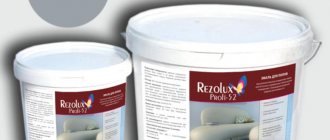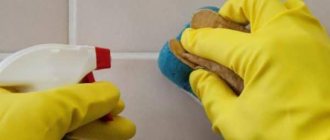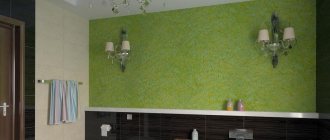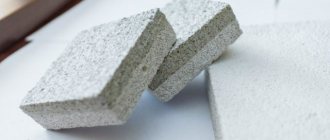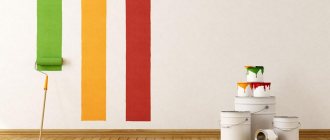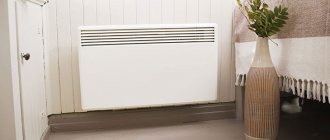Today, painting is quite affordable and one of the most favorite pastimes for a child, but several generations ago not everyone could afford this activity. But in the variety of artistic materials there is one nuance that a beginning artist must take into account.
It lies in the fact that it is quite difficult to choose paints suitable for specific purposes and tasks, since their different types differ not only in their physical properties, but also in the technique of application.
Acrylic is a universal material used in construction and painting. It dries quickly and adheres to almost any surface.
Acrylic paints are distinguished by their bright visual effects, richness and variety, which is why they are so in demand by artists with extensive experience and beginners.
They are absolutely harmless and can be used by animators during children's public events, competitions and master classes. But acrylic paints, like other art materials, have their own characteristics. To choose the right paint, you need to know its composition, properties, and also know the limits of applicability in different techniques.
Characteristics of waterproof paint
Manufacturers try not to include harmful chemicals in paints. Dyes contain polymer compounds and some auxiliary components.
Moisture-resistant paints have the following properties:
- They do not dry quickly, at least 20 hours;
- Some types of paints are resistant to ultraviolet rays;
- Do not fade in the sun;
- They withstand various environmental influences, so they can be used for external painting;
- Some dyes have antifungal protection.
Story
Acrylic paints are considered a fairly modern material, as they were first produced in Germany in the late 20s of the last century. The history of the invention of acrylic paints has several stages.
First, oil nitrocelluloses were obtained. They are considered the first synthetic paints. In New York, such paints were used in the automobile industry and in construction.
At the next stage, polyvinyl acetate was obtained, which contained alkyd masonry for buildings.
The ability to work with resins, as well as the ability to dilute them with organic solvents, became the starting point for the invention of acrylic paints.
The first paints were released in 1947 under the Magna brand. They were polyacrylic dissolved with turpentine. Water-soluble emulsions appeared only a few years later.
This was a breakthrough of sorts. The paint, which was distinguished by a high degree of brightness and also did not require a complex solvent, gained extraordinary popularity. It spread with great speed, so artists from different countries soon began to be interested in the possibilities of new paints.
The technique of working with acrylic has become almost the main one in modern painting since the mid-20th century. World-famous pioneers were such artists as Mark Rothko, Alan Charlton, Andy Warhol, Bridget Riley, Richard Estes and David Hockney.
Pros and cons of waterproof paint
Moisture-resistant paints have a number of advantages:
- Wide range of colors;
- Eco-friendly;
- Perfectly masks small defects on walls;
- Easy to apply to any surface;
- Do not deteriorate in aggressive environments;
- The coating is hygienic.
Dyes also have some minor disadvantages:
- Before coating, the walls must be leveled, since large defects will not disappear;
- Condensation may appear because the substance has low vapor permeability;
- Walls can only be painted at positive temperatures above 5 degrees.
Which rooms are considered wet?
There is a fairly wide list of rooms that are classified as high humidity levels. This includes:
- Hallway;
- Bathroom, shower area;
- Toilet;
- Kitchen;
- Bath;
- Room with a swimming pool.
Choosing paint for these rooms is not easy; the following points must be taken into account:
- Frequent surface cleaning and repair work is required;
- Condensation accumulates here, moisture is constantly present, so the use of moisture-resistant paint for walls is simply a must;
- Resistance to abrasion and dirt is required;
- Eco-friendly composition and non-flammability.
Condensation accumulates here, moisture is constantly present, so the use of moisture-resistant paint for walls is simply a must.
Suitable paints for the bathroom
Types of bathroom paints must have the following characteristics: resistance to moisture, safety, so that mold and mildew do not form due to dampness.
The most common are dyes with micropolymer compounds diluted with water. The cost of such paints is low.
In fact, water-based bath paints can be divided into:
- Oily;
- Silicone;
- Acrylic;
- Silicate;
- Alkyd;
- Chlorinated rubber.
The most expensive are silicone dyes; they have high quality characteristics. Acrylic and silicone paints are great for bathroom walls. They form a protective film on the surface and prevent moisture from accumulating and fungus developing. The paints contain no harmful substances to the human body, they are not poisonous, and dry quickly.
Acrylic brushes
It is important to have a good selection of brushes, from small to large.
Acrylic brushes are usually made from synthetic materials. Do not use oil or watercolor brushes.
These four brushes are some of the most common shapes you'll come across:
Acrylic brushes tend to be longer and stronger
than watercolor brushes, and this is really necessary as they press harder into the work surface while painting.
Characteristics of oil paint
This is the cheapest option for painting surfaces. It is created on the basis of synthetic oils or drying oil.
The insolubility of mineral particles requires the paint to be thoroughly mixed before use.
The advantages include:
- You can paint on wood and metal;
- Does not allow moisture to pass through;
- The result is a smooth surface;
- Good adhesiveness.
There are more disadvantages:
- Strong smell before drying, takes a long time to dry (24 hours);
- The fumes are harmful;
- The color changes over time;
- It fades from the sun's rays;
- In places where water gets in, it begins to crack and peel.
This coating will have to be renewed every year, so it is not recommended to use oil paint in the bathroom.
Recommendations for application
It is better to apply acrylic water-based paints with a roller , and use a brush only in hard-to-reach areas near the baseboard, ceiling frieze, and at the borders with other materials.
The roller evenly rolls out the composition, and the brush leaves protruding stripes. Acrylic forms a strong film, so grooves are difficult to remove with sanding or repaint. Fresh plaster, concrete, brick, and decorative putty must be impregnated with a primer . This saves paint so that most of it is not absorbed into the fresh surface. To paint structural wallpaper, use a roller with a long pile, and smooth surfaces are treated with a nozzle with a short velor.
Silicone water emulsion
The paint is odorless and easy to work with. It has its own positive characteristics:
- Fits well on any surface, even stone and concrete;
- A perfectly flat surface is not needed; it can hide some unevenness;
- Can be used at any temperature;
- The paint layer retains water but allows air to pass through, so it can be called breathable;
- Fungi and mold do not form;
- Easy to clean;
- Not afraid of sunlight.
Minus the cost, expensive paint. But this is compensated by the service life (25 years). It is better not to apply it to a metal base, as the vapors activate the formation of rust.
For wood
If you decide to create moisture protection for wooden surfaces using paints, you usually choose from the following types:
- Water-dispersed;
- Alkyd;
- Polyurethane;
- Oily ones.
If you decide to create moisture protection for wooden surfaces using paints, then you usually choose from water-dispersed, alkyd, polyurethane, and oil-based ones.
Water-based acrylate paint
If we talk about which bathroom paint is better, then it is acrylic. It has the most optimal properties:
- Slightly perceptible odor when drying, and then disappears completely;
- Resistant to moisture;
- Possesses vapor permeability;
- Adheses well to the surface;
- Can be used at any temperature, suitable even for a bath;
- Does not fade, is not afraid of UV rays;
- Eco-friendly.
A wide range of paint colors retains brightness for a long time.
The disadvantage is that the paint takes a long time to dry and the walls need to be prepared for painting. If you choose acrylic paint, then you need to know that when changing paint you will have to completely remove the applied acrylic layer.
If you need to take a break...
Acrylic paint cannot be "revived" once it dries, so if you need to take a break, seal the paint in an airtight container to keep it moist. For a short break, you can simply cover the palette with plastic wrap; for a long time - put the entire palette in an airtight container or use a palette knife to transfer individual colors into an airtight container.
Characteristics of latex paint
Latex comes from the sap of rubber, which dissolves in water. When dry, a film appears that does not allow water to pass through. Pros:
- Quick-drying composition;
- Without smell;
- Easy to apply and clean;
- Durable.
Important: Good coloring is achieved by applying two layers.
There are also disadvantages:
- Before painting, you need to putty the walls with an even layer;
- Suitable for rooms with temperatures above 10 degrees Celsius;
- Requires additional antifungal coating;
- High price.
Although the paint is expensive, it costs little, and the silky shine on the walls lasts a long time.
Alkyd paint
This type is used for any work, but the dye has a strong smell because it contains white spirit.
The advantages of such enamel are that it:
- Resistant to aggressive environments;
- Does not change color;
- Highly durable;
- Dries quickly;
- Withstands any temperature.
Main disadvantages:
- Toxicity and odor;
- Does not allow vapor or air to pass through;
- Requires pre-treatment of walls with an antifungal compound.
If this paint is used in the bathroom, then care should be taken to have a good ventilation system. You need to choose imported products, they do not smell as strong and are less harmful.
Each of the options is suitable for painting bathroom walls. But you need to know that in places near water you should choose paint products that are breathable and moisture-resistant. This is of great importance for interior decoration.
For walls
The paints listed above are suitable for covering walls. In addition to the type, it is important to choose the right color of the dye. Many compositions are presented in a wide variety of shades, so you can choose any option to suit the interior of the room.
The coatings may differ in the resulting effect - matte or glossy. For the ceiling, a white, super-white shade is usually chosen, which allows you to visually lengthen the space. Moisture-resistant paint for walls is selected to match the style of the room, and taking into account the combination with furniture.
For interior work, the safety of the composition for human health is necessary.
Many compositions are presented in a wide variety of shades, so you can choose any option to suit the interior of the room.
